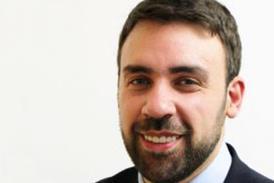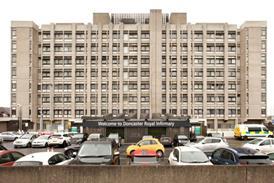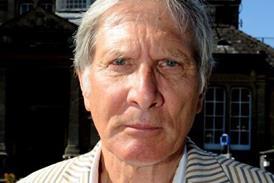In the first of a series of articles from the Foundation Trust Network, Mary Edwards and Jane Hogg discuss why acquisitions can be good for the NHS.

With the deadline approaching for trusts to reach foundation trust status, for some a merger or acquisition may be the only solution. However, history shows M&As are difficult to make a success of. So it is vital they are entered into for the right reasons.
Here we look at why Basingstoke and North Hampshire Foundation Trust’s acquisition of Winchester and Eastleigh Healthcare Trust was the right decision, what we have achieved and what more we have left to do now we are Hampshire Hospitals Foundation Trust.
The acquisition benefited Basingstoke and North Hampshire FT by allowing us to increase the population we serve to more than 500,000 and deliver better clinical care and maintain vital services such as our 24/7 acute care.
It benefited Winchester and Eastleigh Trust by allowing it to consolidate its finances and enhance the services it provides. Most importantly, it benefited patients by ensuring they receive the best possible care in their community.
In undertaking the acquisition we faced three main challenges:
Taking people with us
This was a change that would inevitably affect a wide variety of people: staff; patients; MPs; councillors; GPs; local residents; and our own members. We had to ensure we were taking them all with us on the journey.
As a priority, we ensured staff were the first to hear all announcements, so they stayed informed and felt part of the process. HR was involved at every stage.
We and other figures at Basingstoke and North Hampshire FT met with local MPs to answer questions and discuss their concerns. We also briefed local GPs and held events to keep local councils informed.
We held monthly media briefing sessions to ensure they fully understood our plans and told an accurate story, rather than allowing sensational headlines to steer the conversation. To support this, we organised public discussions to ensure the local population also had a forum for direct communication.
At every stage, for every group of people, we ensured they had the opportunity to ask questions, raise concerns and be updated on our progress.
Addressing nervousness
There is always nervousness about the unknown. Without buy-in from staff, our members and the local community, the process would have been an uphill battle.
One of the main concerns was that the local hospital would be closed. Once we explained the acquisition would, in fact, secure the future of and improve local services, people generally supported the change. Our new clinical model was designed to help to keep services running locally and centralise acute heart, stroke and trauma units to deliver the highest level of care.
Our aim was to be honest and transparent in all conversations. Our message was simple: in order to keep providing the same services around the clock, change is imperative. When we explained the logic behind change, people responded rationally. As a result, we were able to garner support and create “change ambassadors”.
We were also able to win support by being highly committed and leading from the front. Mary Edwards stepped down from her role as chief executive at Basingstoke and North Hampshire FT during the process to concentrate on the acquisition.
Other members of the board had clearly designated roles, and non-executive directors with experience in M&A provided expert insight and guidance.
Have a shadow team in place
Ahead of completion, we had the logistical challenge of ensuring staff were ready to implement the changes on the ground from “go live”.
We placed team leaders for clinical services in shadow posts at the earliest opportunity. It was tempting to hold off enrolling staff until there was a degree of certainty the acquisition would go ahead. However, we found that the sooner these positions were in place the better, as this ensured consistent leadership throughout.
While we have had a good start, we recognise our journey is far from over. We continue working towards creation of a united culture for the newly branded trust. We realised early on we would need to invest time and effort to ensure staff and patients feel they are working and being treated in one trust.
We have made good progress, primarily through building strong leadership teams. However, the physical barrier of managing people across different sites remains our biggest hurdle.
Sharing success stories
We learned early on that the people involved or affected by the acquisition would need reassurance on the need and benefits of the change.
We provide real examples of how the acquisition is benefiting staff, patients and their families and the local population on a regular basis to demonstrate how the change has helped drive better treatment and provide a better working environment.
The acquisition was a steep learning curve. If we had our time again there is one area we would improve.
Channels of communication
Perhaps the biggest thing we have learned is the importance of transparency and regular communication. Our strategy to engage with everyone involved in the run up to, and during, the process reaped great rewards. However, there is more we could have done to keep the communication going once the acquisition had been completed.
All parties had become used to receiving timely updates and being a part of the process. We learned it is just as important to continue engaging with people once the change was in place, to ensure continued trust and confidence in the management’s decisions. If communications and updates trail off, people feel cut off and become less welcoming of the changes.
If we were to give advice to a trust considering or going through an acquisition, we would recommend the following:
- always go into it for the right reasons - it is not a quick fix to fundamental problems;
- lead from the front - ensure there is united leadership from the board that commands the process throughout;
- do not do it alone - be clear and open with everyone affected by the change throughout the process;
- plan for the long term - have a strategy in place that will see you through the preparation, transition and embedding phases of the change.
Mary Edwards is chief executive and Jane Hogg is project director at Hampshire Hospitals Foundation Trust.
























No comments yet